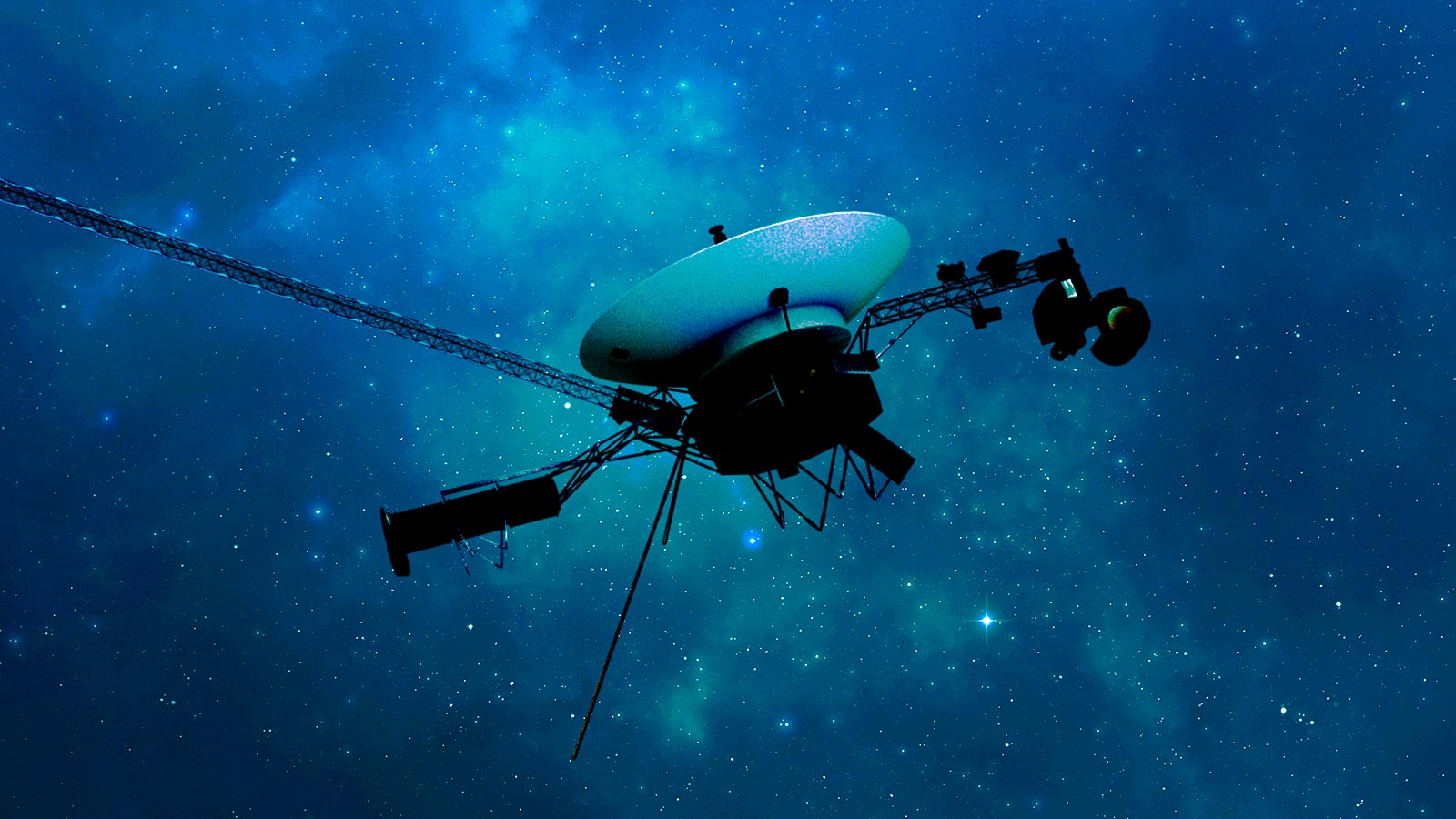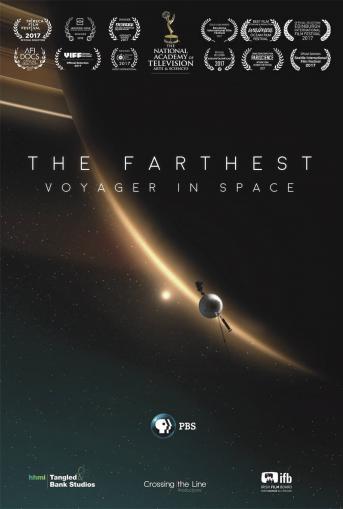
Posted on 10/23/2023 1:22:41 PM PDT by Red Badger

NASA’s Voyager 1 spacecraft is depicted in this artist’s concept traveling through interstellar space, or the space between stars, which it entered in 2012. Traveling on a different trajectory, its twin, Voyager 2, entered interstellar space in 2018. Credit: NASA/JPL-Caltech
~~~~~~~~~~~~~~~~~~~~~~~~~~~~~~~~~~~~~~~~~~~~~~~~~~~~~~~~~
NASA’s Voyager mission team is addressing challenges to ensure prolonged functionality of the two spacecraft. They’re mitigating thruster fuel residue issues and implementing a software patch to rectify a previous Voyager 1 glitch.
The efforts should help extend the lifetimes of the agency’s interstellar explorers.
Engineers for NASA’s Voyager mission are taking steps to help make sure both spacecraft, launched in 1977, continue to explore interstellar space for years to come.
One effort addresses fuel residue that seems to be accumulating inside narrow tubes in some of the thrusters on the spacecraft. The thrusters are used to keep each spacecraft’s antenna pointed at Earth. This type of buildup has been observed in a handful of other spacecraft.
The team is also uploading a software patch to prevent the recurrence of a glitch that arose on Voyager 1 last year. Engineers resolved the glitch, and the patch is intended to prevent the issue from occurring again in Voyager 1 or arising in its twin, Voyager 2.
Thruster Buildup
The thrusters on Voyager 1 and Voyager 2 are primarily used to keep the spacecraft antennas pointed at Earth in order to communicate. Spacecraft can rotate in three directions – up and down, to the left and right, and around the central axis, like a wheel. As they do this, the thrusters automatically fire and reorient the spacecraft to keep their antennas pointed at Earth.
Propellant flows to the thrusters via fuel lines and then passes through smaller lines inside the thrusters called propellant inlet tubes that are 25 times narrower than the external fuel lines. Each thruster firing adds tiny amounts of propellant residue, leading to gradual buildup of material over decades. In some of the propellant inlet tubes, the buildup is becoming significant. To slow that buildup, the mission has begun letting the two spacecraft rotate slightly farther in each direction before firing the thrusters. This will reduce the frequency of thruster firings.
The adjustments to the thruster rotation range were made by commands sent in September and October, and they allow the spacecraft to move almost 1 degree farther in each direction than in the past. The mission is also performing fewer, longer firings, which will further reduce the total number of firings done on each spacecraft. The adjustments have been carefully devised to ensure minimal impact on the mission. While more rotating by the spacecraft could mean bits of science data are occasionally lost – akin to being on a phone call where the person on the other end cuts out occasionally – the team concluded the plan will enable the Voyagers to return more data over time.
Engineers can’t know for sure when the thruster propellant inlet tubes will become completely clogged, but they expect that with these precautions, that won’t happen for at least five more years, possibly much longer. The team can take additional steps in the coming years to extend the lifetime of the thrusters even more.
“This far into the mission, the engineering team is being faced with a lot of challenges for which we just don’t have a playbook,” said Linda Spilker, project scientist for the mission as NASA’s Jet Propulsion Laboratory in Southern California. “But they continue to come up with creative solutions.”
Patching Things Up
In 2022, the onboard computer that orients the Voyager 1 spacecraft with Earth began to send back garbled status reports, despite otherwise continuing to operate normally. It took mission engineers months to pinpoint the issue. The attitude articulation and control system (AACS) was misdirecting commands, writing them into the computer memory instead of carrying them out. One of those missed commands wound up garbling the AACS status report before it could reach engineers on the ground.
The team determined the AACS had entered into an incorrect mode; however, they couldn’t determine the cause and thus aren’t sure if the issue could arise again. The software patch should prevent that.
“This patch is like an insurance policy that will protect us in the future and help us keep these probes going as long as possible,” said JPL’s Suzanne Dodd, Voyager project manager. “These are the only spacecraft to ever operate in interstellar space, so the data they’re sending back is uniquely valuable to our understanding of our local universe.”
Voyager 1 and Voyager 2 have traveled more than 15 billion and 12 billion miles from Earth, respectively. At those distances, the patch instructions will take over 18 hours to travel to the spacecraft. Because of the spacecraft’s age and the communication lag time, there’s some risk the patch could overwrite essential code or have other unintended effects on the spacecraft. To reduce those risks, the team has spent months writing, reviewing, and checking the code. As an added safety precaution, Voyager 2 will receive the patch first and serve as a testbed for its twin. Voyager 1 is farther from Earth than any other spacecraft, making its data more valuable.
The team will upload the patch and do a readout of the AACS memory to make sure it’s in the right place on Friday, October 20. If no immediate issues arise, the team will issue a command on Saturday, October 28, to see if the patch is operating as it should.
More About the Voyager Mission
Initially, the Voyager mission was planned for just four years, with both probes destined to pass Saturn and Jupiter. The mission was later extended for Voyager 2 to visit Uranus and Neptune, marking its unique journey to the ice giants. In 1990, another extension aimed to send the probes beyond the heliosphere, the sun’s protective bubble. Voyager 1 achieved this milestone in 2012, followed by Voyager 2 in 2018.
JPL, a division of Caltech in Pasadena, is responsible for the construction and operation of the Voyager spacecraft. The Voyager missions operate under the NASA Heliophysics System Observatory.
Save the Whales!.....................
But what about the bald chick?


"Forget the head. Put a bag over it and do your business."
Last I knew they had misdirected voyager 2 and lost communications with it. This article made me go find the latest that I missed.
#############################
UPDATE, Aug. 4, 2023: NASA has reestablished full communications with Voyager 2.
The agency’s Deep Space Network facility in Canberra, Australia, sent the equivalent of an interstellar “shout” more than 12.3 billion miles (19.9 billion kilometers) to Voyager 2, instructing the spacecraft to reorient itself and turn its antenna back to Earth. With a one-way light time of 18.5 hours for the command to reach Voyager, it took 37 hours for mission controllers to learn whether the command worked. At 12:29 a.m. EDT on Aug. 4, the spacecraft began returning science and telemetry data, indicating it is operating normally and that it remains on its expected trajectory.
UPDATE, Aug. 1, 2023: Using multiple antennas, NASA’s Deep Space Network (DSN) was able to detect a carrier signal from Voyager 2. A carrier signal is what the spacecraft uses to send data back to Earth. The signal is too faint for data to be extracted, but the detection confirms that the spacecraft is still operating. The spacecraft also continues on its expected trajectory. Although the mission expects the spacecraft to point its antenna at Earth in mid-October, the team will attempt to command Voyager sooner, while its antenna is still pointed away from Earth. To do this, a DSN antenna will be used to “shout” the command to Voyager to turn its antenna. This intermediary attempt may not work, in which case the team will wait for the spacecraft to automatically reset its orientation in October.
“a glitch that arose on Voyager 1 last year. “
YOU HEAR THAT MICROSOFT!!! 1 glitch in 45 years!!!
She was hot.

“Each thruster firing adds tiny amounts of propellant residue, leading to gradual buildup of material...”
Reminder to self to winterize the lawn mower.
"Waive the Sails!" -- William Archibald Spooner
Voyager 1 Sputters Back to Life
Victor Tangermann
Thu, March 14, 2024 at 10:29 AM PDT
https://www.yahoo.com/news/voyager-1-sputters-back-life-172910976.html
Disclaimer: Opinions posted on Free Republic are those of the individual posters and do not necessarily represent the opinion of Free Republic or its management. All materials posted herein are protected by copyright law and the exemption for fair use of copyrighted works.